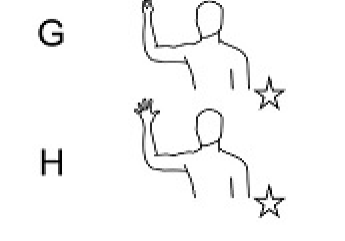Understanding the Role of Occupational Therapist Assistants (OTAs)
Occupational Therapist Assistants (OTAs) are vital members of the rehabilitation team, helping clients regain or improve their ability to perform daily activities. Working under the supervision of Occupational Therapists (OTs), OTAs implement treatment plans, monitor progress, and adjust strategies based on patient needs.
As the healthcare landscape evolves, so does the OTA’s role. With an increasing demand in areas such as geriatrics, pediatrics, and mental health, OTAs must stay current with industry best practices. Continuing education becomes the key to unlocking new opportunities and ensuring safe, effective, and client-centered care.

Why Continuing Education Is Essential for OTAs
Continuing education (CE) isn’t just a requirement—it’s a professional commitment. Here’s why it matters:
- Keeps Certification Active: CEUs (Continuing Education Units) are often necessary to renew certifications from bodies like NBCOT (National Board for Certification in Occupational Therapy).
- Improves Quality of Care: It helps OTAs stay up-to-date with evidence-based practices, enhancing client outcomes.
- Promotes Career Advancement: New skills open doors to promotions, leadership roles, and specialized areas like hand therapy or sensory integration.
- Builds Confidence and Credibility: Staying informed boosts professional self-esteem and employer trust.
Types of Continuing Education Opportunities Available
OTAs have diverse options when it comes to professional growth. Some of the most popular include:
- 在线课程: Ideal for flexibility and self-paced learning.
- In-Person Workshops: Great for hands-on skills and networking.
- Live Conferences: Offer deep dives into specific topics and exposure to new tools and methods.
- Specialized Certification Programs: In areas like neuro-rehabilitation, school-based therapy, and more.
Each type caters to different learning styles, so OTAs can mix and match based on their preferences and career goals.
State Requirements and Accreditation Bodies
Before choosing any course, it’s crucial to understand the regulatory framework:
- AOTA(美国职业治疗协会): Sets quality standards for CEUs.
- NBCOT: Requires professionals to earn Professional Development Units (PDUs) for recertification.
- 州许可委员会: Each state may have unique CEU requirements. For example, California mandates 24 CE hours every 2 years.
Always ensure the course or provider is recognized by these accrediting bodies to guarantee your efforts count toward your license.
Online vs. In-Person Learning: Pros and Cons
| Feature | Online Learning | In-Person Learning |
| 灵活性 | High – learn anytime, anywhere | Limited – fixed schedule and location |
| 相互作用 | Often limited to forums or chats | Real-time with peers and instructors |
| 成本 | Usually more affordable | May involve travel and accommodation |
| Hands-On Skills | Simulated or theoretical only | Real-world, supervised practice |
Both formats have unique benefits, and many professionals benefit from blending both throughout their careers.
Top Online Platforms for OTA Continuing Education
When choosing where to learn, consider reputable platforms known for quality content and user-friendly interfaces:
- MedBridge – Offers comprehensive video libraries and CEU tracking.
- OccupationalTherapy.com – Affordable membership plans with access to 500+ courses.
- CEU360 – Customizable solutions for individual therapists and teams.
- Aspire OT – Created by OTAs, for OTAs. Offers niche, practitioner-led content.
These platforms are accredited, accessible, and tailored to OTA needs.
Specialized Certifications and Advanced Skills
Specialized certifications allow OTAs to deepen their expertise in targeted areas, enhancing both career satisfaction and marketability. Some high-demand specialties include:
- 儿科: Learn therapeutic play, sensory integration, and school-based interventions.
- 手部治疗: Focuses on upper extremity rehabilitation and splinting techniques.
- 老年病学: Covers fall prevention, dementia care, and mobility training.
- 心理健康: Includes strategies for anxiety, depression, and behavioral interventions.
These certifications often come with additional CEU credits and can make a significant difference in clinical effectiveness and earning potential.
Cost and Funding Options for Continuing Education
Pursuing continuing education can be a financial investment, but there are plenty of ways to ease the burden:
- Employer Reimbursement: Many hospitals, rehab centers, and school systems offer partial or full tuition reimbursement for CEU activities.
- Scholarships & Grants: Organizations like AOTA offer competitive scholarships for specialized training.
- Tax Deductions: CEU expenses may qualify as tax-deductible if they relate to current employment.
- Bundled Courses: Platforms often provide discounts for annual memberships or course packages.
By planning wisely, OTAs can expand their knowledge without breaking the bank.
How to Choose the Right CEU Courses
Choosing the best continuing education opportunities involves more than just finding the cheapest course. Here are key tips:
- Accreditation: Ensure the course is recognized by NBCOT or your state board.
- Relevance: Pick courses that align with your current role or future goals.
- Instructor Credentials: Look for courses taught by licensed, experienced therapists.
- Reviews & Ratings: Don’t ignore what peers say—course feedback can save time and money.
A well-chosen CEU course not only fulfills licensure requirements but also inspires growth and confidence.
Balancing Work, Life, and Continuing Education
Many OTAs juggle full-time work, family life, and personal responsibilities. Here’s how to keep continuing education manageable:
- Set Realistic Goals: Break CEU requirements into monthly or quarterly milestones.
- Use Downtime Wisely: Listen to audio lectures during commutes or watch short modules during breaks.
- Create a Study Schedule: Treat CEU time like an appointment to ensure consistency.
- Lean on Support: Inform family or coworkers about your schedule—they can help hold you accountable.
With a bit of organization and commitment, even the busiest OTAs can thrive in their learning journey.
Impact of CEUs on Salary and Job Opportunities
Continuing education doesn’t just check a box—it can directly influence your paycheck and career path. Here’s how:
- Higher Salaries: OTAs with advanced certifications often earn more, especially in specialized settings.
- New Job Roles: Continuing education may lead to supervisory positions, education roles, or niche therapy services.
- Geographic Flexibility: CEU-accredited skills make it easier to move and practice in other states.
- Private Practice: Some OTAs use CEUs to pivot into entrepreneurial opportunities such as consulting or coaching.
Investing in yourself pays long-term dividends, both financially and professionally.
Real-Life Success Stories from OTAs
Sarah R., COTA/L from Texas:
“I was stuck in the same school-based role for years. After taking CEUs in sensory integration and autism spectrum disorders, I landed a leadership role in a multidisciplinary pediatric clinic.”
Jason M., OTA from California:
“MedBridge courses helped me earn a geriatric specialization, which led to a salary increase and a new role in a long-term care facility.”
These stories show how strategic continuing education decisions can open unexpected doors.
Common Challenges and How to Overcome Them
Even the most dedicated OTAs face hurdles in their CEU journey. Common issues include:
- Burnout: Solution – Space out courses to avoid overload.
- High Costs: Solution – Look for employer sponsorships or CEU discounts.
- Lack of Time: Solution – Choose self-paced, mobile-accessible courses.
- Motivation: Solution – Set personal goals or learn with a friend.
Awareness and planning can turn these obstacles into mere speed bumps on the road to growth.
Future Trends in OTA Continuing Education
The world of healthcare is evolving rapidly, and so is continuing education. Emerging trends include:
- AI and Virtual Reality Simulations: Enhancing hands-on learning through immersive experiences.
- Microlearning Modules: Bite-sized content that fits into busy schedules.
- Interdisciplinary Training: Blending OT knowledge with speech, physical therapy, and psychology.
- Lifelong Upskilling: Encouraging OTAs to stay engaged in continuous learning throughout their careers.
Staying on top of these trends ensures OTAs remain at the forefront of care delivery.
FAQs About Continuing Education for OTAs
Q1. How many CEUs does an OTA need to renew their license?
A: It varies by state, but typically 12–24 hours every 1–2 years. Always check with your state board.
Q2. Do online CEUs count toward licensure renewal?
A: Yes, if the course is accredited by NBCOT or your state board.
Q3. Are there free CEU courses for OTAs?
A: Yes, some providers and employers offer free or low-cost CEUs. AOTA occasionally features free webinars.
Q4. Can I use the same CEU for NBCOT and my state license?
A: Often yes, but check both organizations’ requirements for dual approval.
Q5. What happens if I don’t complete CEUs in time?
A: You may risk license suspension or have to pay fines or complete makeup credits.
Q6. What are PDUs and how are they different from CEUs?
A: PDUs (Professional Development Units) are NBCOT’s version of CEUs. They’re often interchangeable, but terminology differs.
Conclusion: Lifelong Growth Through Continuing Education
Continuing education for occupational therapist assistants is more than a requirement—it’s a roadmap to a richer, more fulfilling career. Whether you’re exploring new specialties, aiming for a promotion, or simply staying up-to-date, each course brings you one step closer to professional excellence.
Invest in yourself. Learn continuously. And never stop growing.
更多阅读内容
中风后拉伸以缓解痉挛
快速审核人:Mikayla Murphy Kerr, L.、Jewell, VD 和 Jensen, L. (2020)。针对中风后痉挛、手功能和功能任务的拉伸和夹板干预:系统评价。美国职业治疗杂志,74, 7405205050。https://doi.org/10.5014/ajot.2020.029454 瘦身这项研究重点关注拉伸上肢以减少痉挛、增加……的好处。
阅读更多一种新型正中神经滑动治疗腕管综合症
孟 S、赖西格 LF、贝基彻 R、Tzou CH、格里索尔德 W、温宁格 WJ (2015)。腕管中正中神经的纵向滑动:传统和新颖的神经动员概念的超声尸体评估。物理医学与康复档案96(12)。 doi:10.1016/j.apmr.2015.08.415。作者:凯尔·特科特 瘦腕管综合症是一种……
阅读更多注册即可直接将更新发送到您的收件箱!
注册我们,我们将定期向您发送有关手部治疗的所有内容的博客文章、每次上传新视频和教程时的通知,以及讲义、协议和其他有用信息。





